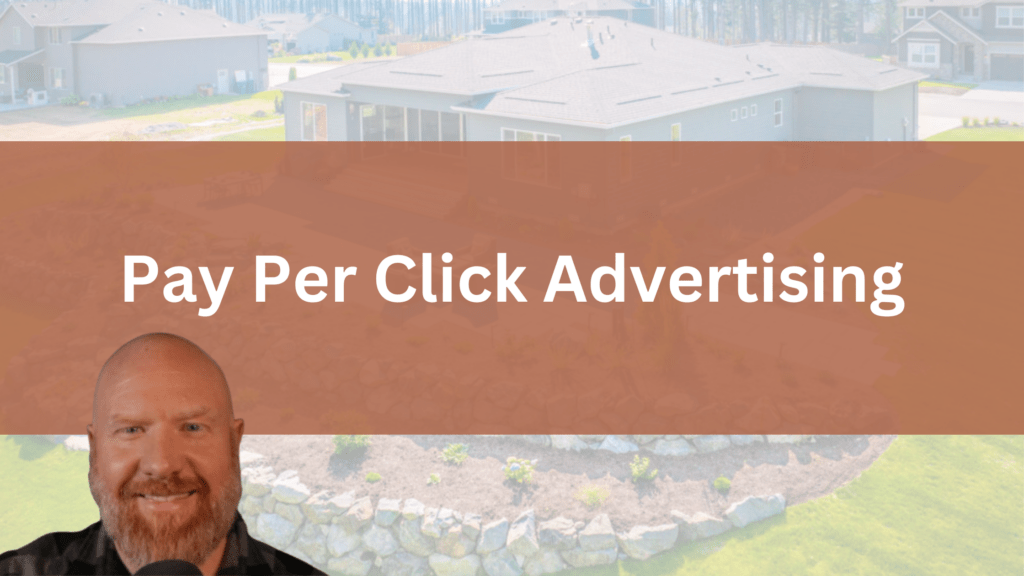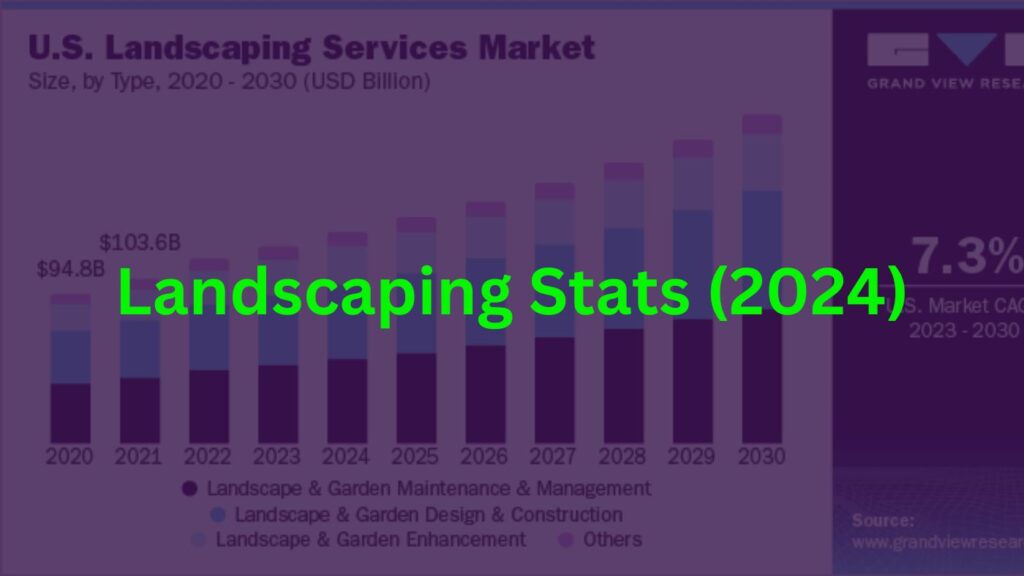A Comprehensive Strategy Guide from Hardscape Marketing Crew
Are you ready to explore the world of pay-per-click (PPC) advertising and unleash its potential for your hardscape landscaping business? This comprehensive guide will help you understand PPC’s key components and master advanced strategies for maximizing your return on investment.
Key Takeaways
- Effective Promotion: PPC advertising enables hardscape landscaping businesses to effectively promote their services.
- Core Components: Key components of PPC ads include ad copy, keyword selection/management, targeting options, and platforms such as Google Ads.
- Strategic Success: Successful PPC strategies involve setting clear objectives, conducting keyword research, crafting compelling ads, and managing campaigns with data-driven insights.
Understanding Pay-Per-Click Advertising
Pay-per-click (PPC) advertising is a powerful digital marketing model in which advertisers pay a fee each time their ad is clicked. For hardscape landscaping businesses, PPC provides targeted visibility, potentially yielding substantial ROI. By utilizing paid search strategies, PPC marketing drives traffic to your website, elevates brand visibility, and fosters lead and sales generation.
Major PPC Platforms
Choosing the right PPC platform for your hardscape landscaping business can significantly amplify the impact of your advertising efforts. Major PPC platforms include Google Ads, Microsoft Advertising, and social media platforms like Facebook and LinkedIn. Each platform offers unique targeting options and ad formats, catering to different business needs and objectives.
Key Components of PPC Ads
The foundation of any successful PPC campaign is the right combination of:
- Ad Copy: The text that appears in your ad, designed to grab the attention of your audience and compel them to click.
- Keywords: The terms and phrases you bid on, which trigger your ads when users search for them.
- Targeting Options: Allow you to reach the right audience based on factors such as location, demographics, and interests.
- Bidding Strategies: Determine how much you are willing to pay for each click or conversion.
How PPC Advertising Works
PPC advertising operates through an auction system, where advertisers bid on keywords, and ad placement is determined by factors such as bid amount, Quality Score, and Ad Rank. Once your ad is active, the placement, timing, and cost of a click are calculated algorithmically based on your budget, bid, campaign settings, and the quality and relevance of your ad.
Developing a Successful PPC Strategy
Developing a successful PPC strategy for your hardscape landscaping business involves:
- Setting Campaign Objectives
- Conducting Keyword Research and Selection
- Crafting Compelling PPC Ads
- Optimizing Landing Pages for PPC Campaigns
- Managing and Monitoring PPC Campaigns
Setting Campaign Objectives
Establishing clear campaign objectives is essential for creating an effective PPC strategy. Your objectives should align with your overall business goals, ensuring that your PPC campaigns contribute to your organization’s success. Typical goals of PPC advertising include raising brand recognition, generating leads, promoting sales, and enhancing website traffic.
Keyword Research and Selection
Keyword research and selection play a vital role in targeting the appropriate audience and driving high-quality website traffic. Utilize tools like Google Keyword Planner, SEMrush, SpyFu, and Ahrefs to identify the most relevant and profitable keywords for your hardscape landscaping business.
Case Study: Landscaping Design Client’s First 30 Days
To give you a real-world example, let’s take a look at the first 30 days of a PPC campaign for a landscaping design client. With a budget of $75 per day, Monday through Friday, here’s what we achieved:
- Clicks: 187
- Impressions: 4,418
- Click-Through Rate (CTR): 4.23%
- Average Cost Per Click (CPC): $8.08
- Total Cost for the Month: $1,511.50
- Leads Generated: 27
- Cost Per Lead (CPL): $55.98
- Conversion Rate: 14.44%
This campaign focused solely on landscaping design keywords, excluding lower-revenue services like lawn mowing. The first 30 days showed promising results, with room for improvement in the conversion rate through ongoing split tests and optimizations.
Crafting Compelling PPC Ads
Creating engaging PPC ads is a key aspect of any successful PPC campaign. Effective ad copy should be concise, relevant, and include a strong call-to-action. Ad extensions such as sitelinks, callouts, and structured snippets can provide additional information and increase the overall effectiveness of your PPC ads.
Optimizing Landing Pages for PPC Campaigns
Optimizing your landing pages for PPC campaigns is crucial for enhancing conversion rates and maximizing ROI. Follow best practices for landing page design, including clear and concise messaging, strong calls-to-action, and mobile-friendly design. A/B testing can also significantly contribute to the optimization of your landing pages.
Managing and Monitoring PPC Campaigns
Effective management and monitoring of PPC campaigns require tracking vital metrics, reviewing performance data, and making necessary adjustments to optimize results. Key metrics to track include clicks, impressions, CTR, CPC, and conversion rates. Regular refinements based on performance data can enhance overall campaign effectiveness and ROI.
Advanced PPC Strategies and Techniques
Beyond the basic principles of PPC advertising, there are advanced strategies and techniques you can implement to amplify your campaigns. These include:
- Remarketing and Retargeting: Show ads to users who have previously interacted with your website, increasing the likelihood of conversions.
- Dynamic Ads and Shopping Ads: Automatically generate ad content based on your website’s product inventory, offering a more personalized and relevant ad experience.
Leveraging PPC Tools and Software
Utilizing PPC tools and software can facilitate campaign management, enhance performance, and optimize ROI. Some top PPC management tools include Adzooma, Dataslayer, Adalysis, Optimizely, Opteo, SpyFu, AdEspresso, Leadpages, and Google Analytics 360.
Summary
Mastering PPC advertising involves understanding its key components and techniques, crafting compelling ads, optimizing landing pages, and leveraging the right tools and software to manage and monitor your campaigns. By following the strategies and best practices outlined in this guide, your hardscape landscaping business can harness the power of PPC advertising to drive results and propel your business to new heights.
Frequently Asked Questions
What are ads that pay-per-click? Pay-per-click (PPC) is an online advertising model in which an advertiser pays a publisher each time an ad is clicked. It’s offered by search engines (e.g., Google) and social networks (e.g., Facebook), and commonly used for paid search ads that appear at the top of SERPs when a user enters a specific query into a search engine.
How much do you pay with pay-per-click advertising? In general, Google CPCs range from $1 to $7, with different keywords having different cost ranges. On average, advertisers make approximately $0.10 to $1 per click, with high-paying campaigns offering up to $6 or $7.
How effective is pay-per-click advertising? Pay-per-click advertising is an effective way to boost your sales, with an average of 200% return on investment. Your performance may differ depending on several factors, but PPC can definitely be a great option for boosting sales.
What does PPC stand for? PPC stands for pay-per-click, a type of internet marketing where advertisers pay each time an ad is clicked.
What is the most significant factor for determining ad placement in PPC advertising? Bid amount is the most significant factor when it comes to determining ad placement in PPC advertising, followed by Quality Score and Ad Rank.
By implementing these strategies and leveraging the expertise of Hardscape Marketing Crew, your hardscape landscaping business can achieve significant growth and success through effective PPC advertising.






